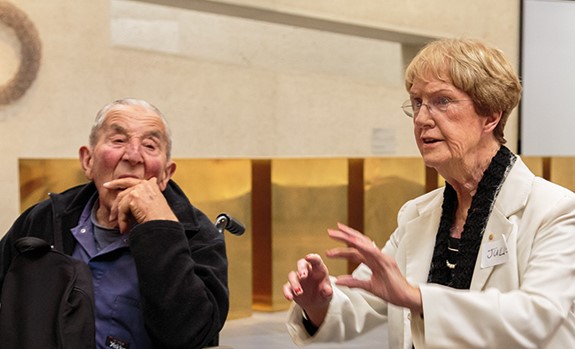Art World
Researchers Have Found That Visiting Art Museums Can Offer Significant Relief for People Living With Dementia
Visiting the National Gallery of Australia helped alleviate people's depression and reduce stress.

Visiting the National Gallery of Australia helped alleviate people's depression and reduce stress.

Caroline Elbaor

Dementia affects people’s memory and also how they think and feel, but visiting an art museum can help alleviate depression and reduce stress levels, researchers in Australia have discovered.
While the positive impact of art on people’s mental health and wellbeing is increasingly recognized by doctors, a recently released study by the University of Canberra shows the significant benefits of experiencing art in a safe space for those living with dementia.
The study published in the Journal of Alzheimer’s Disease reported reduced levels of depression, and improved quality of life, as well as cognitive function, in people with dementia who participated in a special program at the National Gallery of Australia in Canberra.
A group of 28 participants, each supported by a carer or family member, took part in the six-week program, which was followed up after 12 weeks. The art selected for discussion included a mix of paintings, sculptures, and textiles. The pieces were chosen to stimulate new thoughts and perceptions of art, and to encourage different types of discussion within the group.

Participants in the National Gallery of Australia’s Art and Dementia program. Courtesy of NGA, Canberra.
Researchers broke new ground by gathering saliva samples to test participants’ cortisol levels in order to measure feelings of stress. According to the results, “the HPA-axis function,” which is the human’s central stress response system, was “altered following engagement in a specific and tailored program for people living with dementia.”
Nathan D’Cunha, who led the study, says there were notable improvements in the elderly participants. “Some of the participants were selected by staff at the aged care facilities because they were quite depressed, but we didn’t expect them to become so talkative and animated after only the first and second visits to the NGA,” he says.
D’Cunha, who is an academic teaching nutritional science at the University of Canberra, adds: “The use of anti-depressants in residential aged care in Australia is quite common, and it was interesting to see that getting out of the facility and coming to the NGA reduced depressive symptoms.”
He says for some participants there was a “stunning” difference after their museum visits. They were “transformed and smiling while at the NGA,” he says. Australia’s national art museum has been organizing special tours of the collection for people with Alzheimer’s and related conditions since 2007.